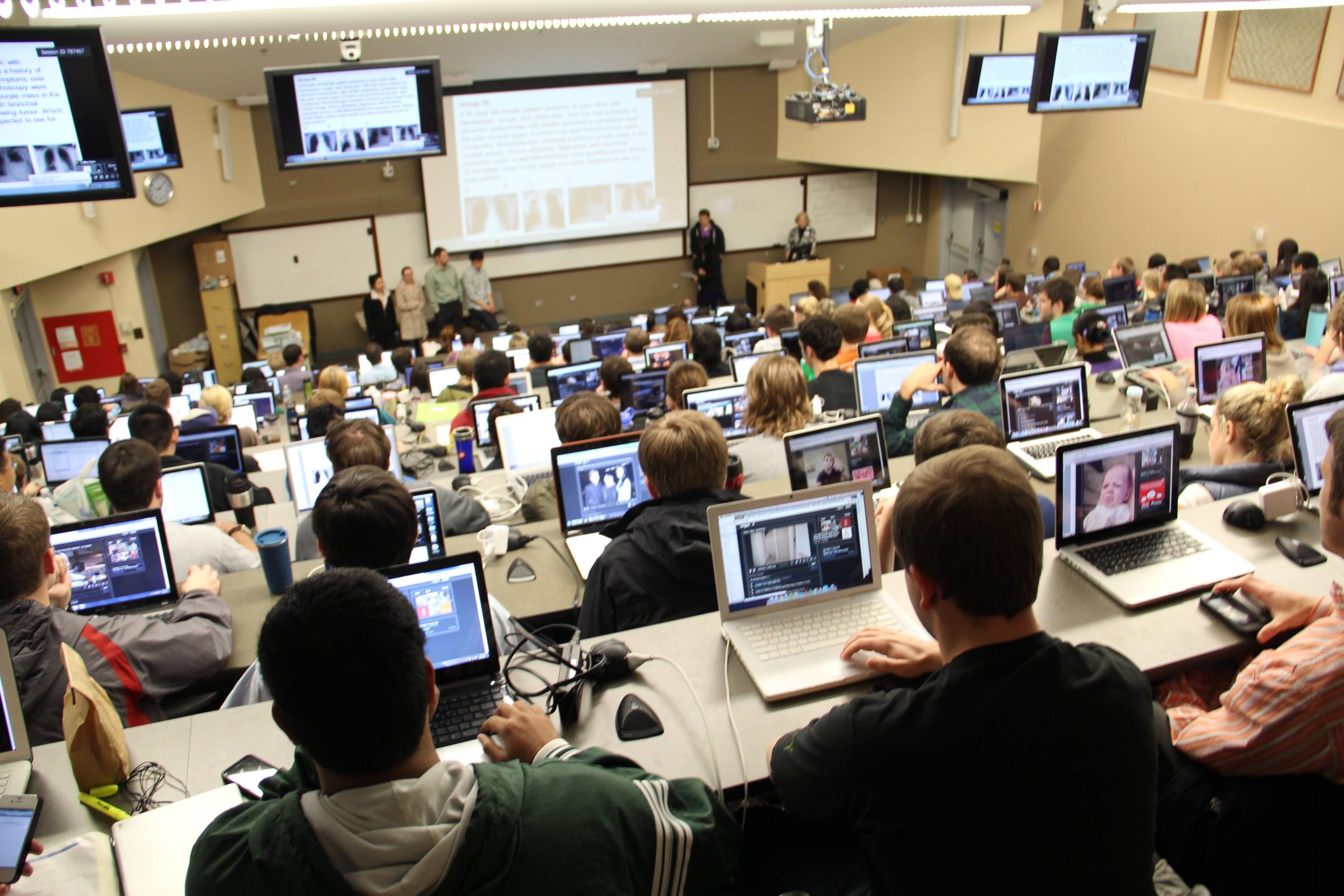One of the quickest ways that professors can get students to drop their course after the first lecture is to announce that laptops are not permitted. The feeling in the lecture hall is almost palpable as everyone pictures lectures with nothing but a pen, some paper, and a professor attempting to keep the attention of 100 or more students. Laptops do have their uses in an academic setting, including those that are not exactly academic—the temptation of the internet is always there during a lull in a lecture. The age-old practice of writing notes by hand, however, has several advantages over typing on laptops.
As much as it might pain students who have full course loads, are involved in extracurriculars, or are trying to maintain some shred of a social life to realize, humans are bad at multitasking. Multitasking leads to impulsive decision making, as well as problems with processing information. Unfortunately, the modern laptop is a multitasking machine: Students can take notes, write emails, update social media, read the news, and check the weather, all while sitting in class. This seems like a godsend being able to get so much done at once, but you are absorbing very little information.
There is no multitasking with a pen and paper—you are locked in. There are no new tabs, updates, or notifications—nothing but what the professor is talking about. There are those who say they can refrain from the endless multitasking capabilities of a laptop in lecture, and maybe they actually can, but all it takes is one boring tangent and suddenly you are deep into scheduling your next two weeks, or chatting on Facebook.
Every professor who has ever advocated or enforced handwriting has brought up the studies that indicate that students learn better when taking notes by hand. However many times students have heard the speech and rolled their eyes, it doesn’t make the science any less true. Students who take notes by hand remember lectures better than those typing, even when those typing are warned ahead of time. After all, there must be a reason these professors resort to the same tirade time and time again.
The perks of handwriting for individual students are numerous, but should this grant professors the right to ban laptops from their lectures? Earlier this year a commentary in the McGill Daily argued that this was a paternalistic and dictatorial decision that overruled paying students’ rights to decide how best they learn for themselves. While there is some truth there, there is something that the piece failed to recognize. Yes, professors are providing a service for which students pay a good deal of money. But professors are also lecturing to make, in some cases, very dry material seem a little interesting, which becomes even harder to do if the audience is a sea of laptops. Having sat in classrooms permeated with laptops as well as those in which everyone took handwritten notes, it is clear that students are more engaged, ask more questions, and become more collaborative when laptops are absent. There is a real difference in the quality of a lecture when the professor feels appreciated, or at least feels heard.
There is no one right way to learn. Some people might learn better with a laptop. But it has become the norm that the newer, more efficient way is seen as the best way, and this is not always the case. Though it might take a little more thought and require eye contact, the value of hand writing should not be dismissed.








